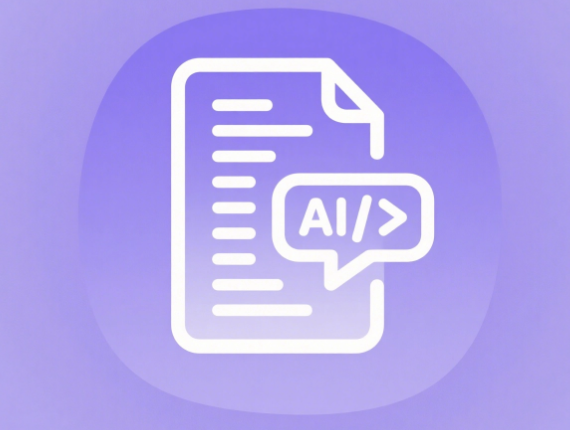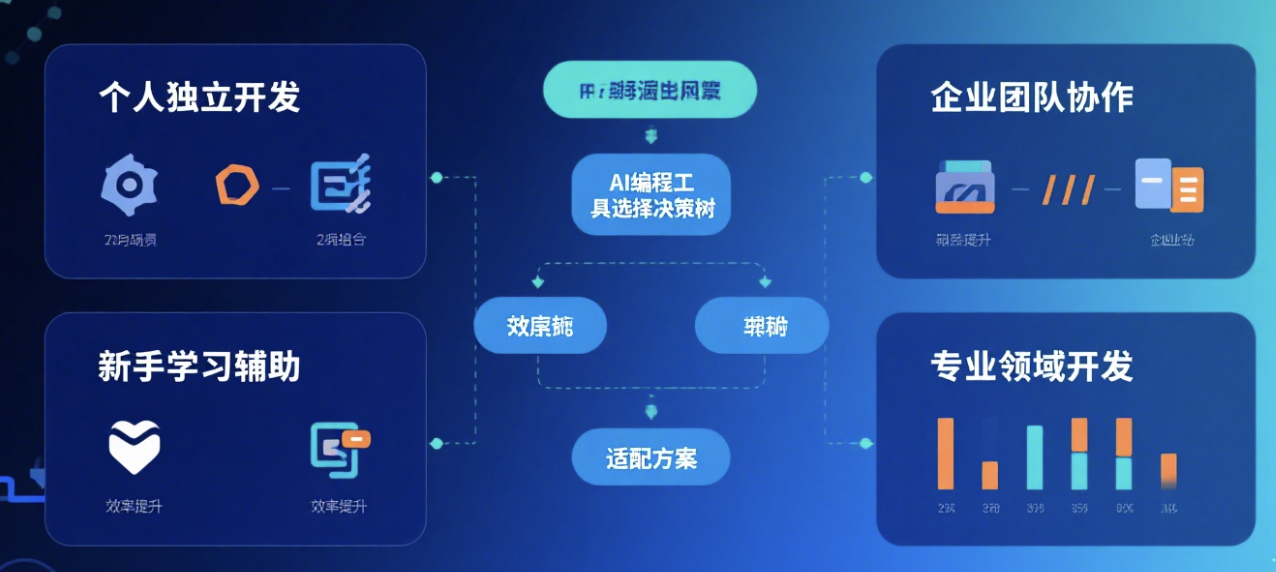8 AI code assistants that front-end developers are using. AI code assistants are reshaping front-end development workflows: using artificial intelligence and large models to connect requirements, code, tests, and documentation in one stop. AI tools such as ChatGPT and Claude have become standard around React, TypeScript, and automation, and choosing the right AI can significantly improve delivery speed and code quality.
1. 8 AI Code Assistants at a Glance
1. Mainstream and general-purpose
AI tools are representatives of GitHub Copilot, ChatGPT, and Claude, covering the entire link from completion to debugging.
(1) GitHub Copilot: Deeply embedded IDE, AI auto-completion, Copilot Chat Q&A and multi-IDE support, front-end daily CRUD, single test skeleton and regular generation are very stable.
(2) ChatGPT: Relying on large models and Code Interpreter and other capabilities, it is suitable for building demos, debugging complex errors, and explaining third-party library designs from zero to one; With IDE extensions, you can directly read and write project files.
(3) Claude Code: Emphasizes codebase understanding and intelligent search, suitable for refactoring, dependency analysis and quick start of large front-end repositories, and the long context is especially advantageous for reading old projects.
2. IDE integration and editor
Theintegration of AI and editor can turn "chat-modify-run" into a closed loop.
(1) Cursor: AI Code Editor, understanding codebase and natural language batch changes, suitable for front-end renaming, style extraction and component splitting.
(2) Windsurf: The original Codeium team product, auto-completion, chat and search are integrated, supporting multiple languages and plug-ins, suitable for multi-person collaboration and cross-project switching.
3. Enterprise and privacy scenarios
When teams focus on compliance and controllability, AI tools should emphasize security, auditing, and deployability.
(1) Tabnine: Focusing on privatization and compliance, it can be locally or self-hosted to meet the strict requirements of enterprises for code assets and AI data flow.
(2) Amazon Q Developer: Deeply combines AWS and IDE, suitable for code generation, refactoring, and O&M linkage between cloud front-end and serverless projects.
4. Code understanding and retrieval
Complex repositories require AI that "understands and regenerates".
(1) Sourcegraph Cody: Relying on code graph and semantic search, it is good at cross-database retrieval, batch modification suggestions and long-link problem positioning, and is suitable for large front-end single warehouses or multiple warehouses.
2. Selection suggestions and landing
1. Take a seat according to the front-end scene
AI matching front-end scenarios is more critical: GitHub Copilot or Cursor is used for component library development; Document and scaffolding generation is biased towards ChatGPT; Claude or Cody for warehouse refactoring and dependency migration; Cloud integration goes to Amazon Q Developer; Tabnine is used for compliance first; Switch between multiple items to try Windsurf.
2. Cost and compliance
AItool billing varies greatly: individuals can use the free or starter version first, and teams evaluate agents, call volume, and privatization costs. When it comes to source code and customer data, give priority to AI tools with enterprise permission management and auditing.
3. Effect maximization list
(1) Repository index: Let the AI read the README, technical solutions, and API comments to supplement the key context.
(2) Instruction engineering: write clearly "problem-expectation-limitation-acceptance"; The front-end can be attached with framework versions, browser compatibility, and performance indicators.
(3) Double check: the AI-generated code first passes ESLint/TypeScript, and then runs a single test and preview; Form an automated assembly line of "AI modification-local verification-minimum granularity submission".
(4) Anti-overreach: For strong AIs such as ChatGPT and Claude, set read-only directories or temporary branches, and change important directories to PR.
3. Quick start list
1. Installation and configuration
Unified IDE extension, login method and model selection; Set up unified prompt templates and project contexts for ChatGPT and Claude.
2. Team Specifications
Define the review list for AI-generated code: readability, performance, testability, and security; Clarify which changes can be submitted by AI automation.
3. Evaluation metrics
Measure the actual value of AI: submission pass rate, repair time, repeat bug rate, build time, page performance, and real business delivery cycle.
Frequently Asked Questions (Q&A)
Q: Which AI tool is easier for front-end newcomers to get started?
A: Use GitHub Copilot and ChatGPT first, and the two are well combined with Q&A; Then supplement Claude or Cursor as needed, gradually forming a closed loop of "AI generation-local verification".
Q: How can enterprises use AI while ensuring compliance?
A: Preferential AI tools that support privatization and permission control, such as Tabnine and Amazon Q Developer, combined with code auditing and read-only permissions, ChatGPT and Claude are used in non-sensitive scenarios.
Q: Who is stronger on the front-end, Claude or ChatGPT?
A: Complex code understanding and Okura refactoring tendency Claude; Multimodal, scratch-from-scratch and interpretive tasks ChatGPT is more flexible. The actual decision is based on the project volume and team experience.
Q: Who is better for refactoring, Cursor or Windsurf?
A: Both are strong in automatic changes in the editor; Cursor is quick to use natural language batch rewriting, and Windsurf is smoother for multilingual, multi-plugin, and cross-project switching.
Q: How to prevent AI from changing bad code?
A: Limit AI changes to temporary branches, combining ESLint, TypeScript and single test access control; Large models such as ChatGPT and Claude only operate on specified directories and force PR review.




